
From the moment in 1985 when Donald Trump decided to make Mar-a-Lago his personal castle, he has shattered the Palm Beach, Florida old-money conventions with the same thin-skinned, sue-you-in-a-heartbeat, self-congratulatory ethos which has made him such a mesmerizing character akin to a derailed train you want to ignore but can’t look away. As we’ve learned since 2015, you can’t write too much about Trump since he’s a narcissistic sociopath with no moral scruples and way more scandals than Henry VIII. Whether you like him or hate him, you can’t write too much about Trump since he’s an inexhaustible source of good stories.
The last of Palm Beach’s estates to stretch from the Atlantic Ocean to the Intracoastal Waterway, Mar-a-Lago was a single-family of grand design. This Mediterranean-Revival style mansion had 118 rooms, including 58 bedrooms, 33 bathrooms, 35 dining rooms, a ballroom, a theater, a 6 car garage, a 9-hole golf course, 3 bomb shelters, and a 75ft tower you could see for miles. Built in 1927 for cereal heiress and richest woman in America at the time, Marjorie Merriwether Post, she willed it to the federal government for use as a winter White House for American presidents after her death in 1973. Though the home became a National Historic Landmark, presidents didn’t use it while the federal government became sick of paying $1 million a year to maintain it. So the federal government gave the estate back to the Post Foundation who put up for sale for $20 million.
At the time, Donald Trump was a hotshot 39-year-old real estate developer who had opened his 58-story signature Trump Tower skyscraper in Manhattan. Eager to get the Florida mansion off their hands, the Post Foundation agreed to a bargain $10 million sale- $7 million for the property and $3 million for the furnishings and in a contract requiring Trump to only put down $2,812 of his own money. A Palm Beach County property appraiser later wrote in a court brief that anyone buying a “rabbit warren condo” in a lower-middle class neighborhood would’ve had to put more money down than Trump did. Nonetheless, Trump listed his purchase of Mar-a-Lago as an example of his deal-making prowess writing in The Art of the Deal, “I’ve been told the furnishings in Mar-a-Lago alone are worth more than I paid for the house.” Mar-a-Lago was “as close to paradise as I’m going to get.” Palm Beach County agreed by assessing Mar-a-Lago’s property at $11.5 million, which was 64% than he paid for it. This left Trump in a tough position of politically bragging about getting his spare mansion in Palm Beach for a bargain, while privately arguing in court filings he should get a tax deduction. He testified, “I paid the highest price for a piece of land that’s costing $2 or $2 ½ million a year to maintain. Maybe the tax assessment will force us to develop the land, which I’m sure won’t make the town very happy.” Except he didn’t. Furthermore, a 1988 Associated Press article depicts how Trump fought against a $200,000 property tax bill, which he claimed should’ve been half. Nonetheless, back in the 1980s, this was the kind of brash talk Palm Beach’s old-money aristocrats feared from Trump. Since he wasn’t the sort of genteel patrician Palm Beach’s Social-Index Directory favored. In fact, some regarded him as a gated community barbarian as well as a hustler too eager to impress. While his threat of chopping up Mar-a-Lago was an open of some rough relations on the horizon.

While Donald Trump was trying to acquire Mar-a-Lago, he launched another real estate venture called Trump Plaza of the Palm Beaches. However, he ended up selling about 100 out of 221 condo units as well as borrowed $60 million which he couldn’t pay back. In the end, Trump lost his financial stake in the project and the bank took over.
While his Mar-a-Lago investment was in doubt, Donald Trump launched another local real estate venture across the Intracoastal Waterway in West Palm Beach. The property was an ailing 33-story, twin tower complex that a Palm Beach developer had lost in foreclosure. In 1986, Trump bought it for $40 million cash which was $3.2 million less than what the Bank of New York paid to reclaim the property at a public foreclosure auction. And like Mar-a-Lago, it was becoming a deal he couldn’t afford. Trump then renamed the West Palm Beach condo project after himself while spending millions to spruce up the Trump of the Palm Beaches’ public areas and advertise the sale of its luxury condos in Northeastern newspapers. Trump said at the time, “This is not a very large deal for me, but it’s a quality deal. We expect a lot of people in Palm Beach to be buying apartments for family, et cetera.” But after 4 years of heavy promoting, he only managed to sell 100 of the 221 units, which was less than half. In addition, Trump borrowed $60 million from the Marine Midland Bank of New York to pay for the project, which he couldn’t pay back. In 1991, 2 months before filing for corporate bankruptcy on his Trump Taj Mahal in Atlantic City, Trump turned over the Trump Plaza of the Palm Beaches to Marine Midland Bank of New York for his $14 million personal guarantee on the loan. The bank unloaded the unsold units in a fire-sale auction accepting bids of $75,000 for units previously priced as high as $470,000. Yet, because he can’t admit to personal failure, Trump took a victory lap saying, “It’s great for me because I get off a guarantee. Only because of the success of the development could I have done that.”
However, Donald Trump was still trying to find a way to salvage his Mar-a-Lago deal. So he didn’t want to give his Palm Beach neighbors the notion he was really drowning in debt. So after the bank sold off units from Trump Plaza of the Palm Beaches, Trump took out a full-page ad in The Palm Beach Daily News, which read: “This is an advertisement to explain the great success of a development, Trump Plaza of the Palm Beaches, which many people, until recently, had not been fully aware. When I look at Trump Plaza from Mar-a-Lago, I am proud that even in the horrendous real estate market of the early 1990s, I was able to rescue this previously troubled and unsold development, add management, construction expertise and the name Trump … and make it into one of Florida’s greatest success stories.” It didn’t mention that he completely lost his financial stake in the condos or how the project actually achieved full occupancy. So basically, Trump took an ad bragging about his “success” of his Palm Beach condo project, which was actually a total failure that he lost to the bank. Nor did that “success” change the fact that Trump still couldn’t afford Mar-a-Lago as a single-family home. And nobody was coming along to relieve him from the deal on “paradise” he had made.
Donald Trump’s proposed solution was to chop his National Historic Landmark into something he called the Mansions of Mar-a-Lago. This was a development that would put a public road running through the middle of the estate, leading to the 10 mini-mansions he’d build on the property, including one on the front lawn. But the Palm Beach Town Council shot down all of Trump’s proposed changes to the property, even when he reduced his mini-mansion plans from 10 to 7. Instead, they encouraged Trump to find a buyer if he couldn’t afford to keep the estate intact. After all, New York packaging magnate, Nelson Peltz had spent $21 million to buy Palm Beach oceanfront estate Montsorrel, 2 years after Trump bought Mar-a-Lago. So the town council advised Trump to just buy another Nelson Peltz to take the estate off his hands. However, as we all know, Donald Trump didn’t act on the Palm Beach council’s advice. In fact, when the town government refused to bend to his demands, he sued. The lawsuit against the Town of Palm Beach would eventually cause his neighbors to lawyer up against him. One of these lawyers told The Palm Beach Post at the time, “There are rules around here, and those rules apply to everyone, whether or not you have a famous name.”
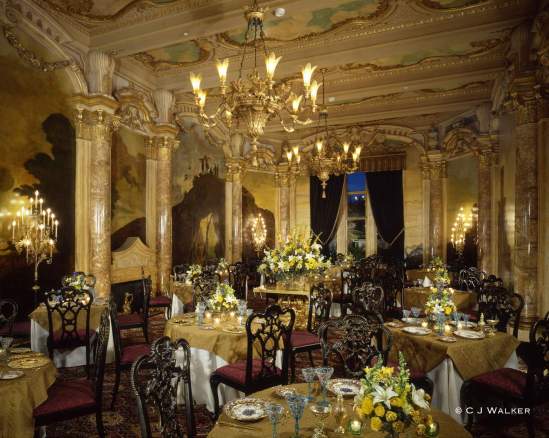
When Donald Trump’s Mansions of Mar-a-Lago plan fell through, he decided to turn it into a private club it is today. Naturally, the Palm Beach Town Council took him on it since it was an all around win-win situation.
After Palm Beach rejected his Mansions of Mar-a-Lago, Donald Trump found another way to salvage his stake in his property. He offered to drop his lawsuit if council members allowed him to convert his estate into a new private club on the island. Since so much of Palm Beach social life was dictated by club memberships, this was a tempting offer. This was especially since there hadn’t been a new club on the island for a quarter century. In the deal, the town would get to have Mar-a-Lago remain in appearance it was in the Merriwether Post days. While Trump could unburden himself of its expenses by selling off memberships while maintaining his property ownership. Membership would be capped at 500, not including spouses and children. The initiation fee would be $50,000 with $3,000 annual dues (fee is now $200,000 with $14,000 in annual dues and charges $2,000 for meals). Members would get to dine, swim in the pool, and attend private parties and special events with world-class singers, lecturers, and entertainers. The town eventually approved the club.
But many Palm Beachers were still reluctant to trust Donald Trump. Socialite Tamara Newell said at the time, “A lot of people like to think Palm Beach is a little more genteel and old money. This is a new-money idea at an old-money location.” And approval of the club only gave them more reasons to peck at him. Now a lot of these disputes in the 2016 Politico article I read about his war with Palm Beach consist of a lot stupid shit like wedding fireworks, attendance limits to an Elton John AIDS concert, or changing the coat of arms to put Trump as an advertising ploy. While Trump is known for being notoriously petty, Palm Beach is filled with petty rich people and a town government that once banned shirtless joggers for tackiness and scented its sewer water with lilac and honeysuckle fragrances. Such petty disputes between Trump and the rich set of Palm Beach don’t seem to interest me much. Mostly because I care more about Trump deliberately screwing people out of their money or using intimidation tactics to get his way.
Yet, there is a telling incident in the 2016 Politico article on Donald Trump at Mar-a-Lago that’s very telling, especially on his insatiable appetite for self-promotion and the media’s role should be. In the first January after his divorce from his first wife Ivana was final, Trump’s publicist called all the local TV news and newspaper outlets in Palm Beach County to say that Trump was about to hold the party of all parties for that Winter’s Palm Beach social season. The publicist explained that one reporter from each news outlet would be allowed to attend this party-of-the-year to mingle with a guest list of invited celebrities such as Tom Selleck, Slyvester Stallone, and football star Herschel Walker. Frank Cerabino was on the guest list to cover the event for the Palm Beach Post. But it turned out his role at the party was far more complex than he imagined. Writing for Political in 2016, he recalled, “As the real guests arrived, which included busloads of fashion models from Miami, I was part of a local media contingent who wasn’t allowed to actually come into the party, but instead would form a visual tableau of over-eager reporters playing the role of gate crashers to those who would see us as their cars drove up to the portico of the mansion.” He continued, “Trump left us standing in his driveway in a little cluster. We were unaware, at first, of our role. But he couldn’t help coming over to wring out every last drop of publicity for the night.” In other words, Cerabino and the local reporters were at Mar-a-Lago to make him and his party look good as props. Going out of his way to show that he was winning divorce (like you can even do that), Trump invited a national TV reporter Judd Rose and his crew from ABC’s Prime Time Live show, into his home as guests for the weekend. Rose and his crew eventually filmed the money shot of the invitees, but shunned the local reporters yelling across the driveway to Trump to let them in. While Trump made a shooting gesture as if to wave them off and later described the reporters in the driveway as those who invited themselves to the party. Over the years, Cerabino has learned that Trump admires or despises journalists based on how useful they are to him while his sense of humor doesn’t include anything directed to him.
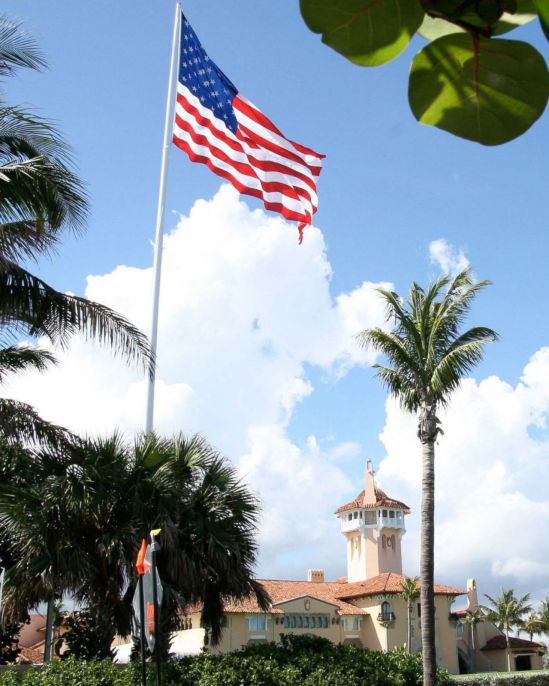
One of the biggest Donald Trump disputes of legend at Mar-a-Lago was when he put up an oversized American flag on a tall pole at the resort. This incident would later be lampooned on The Colbert Report.
In 2006, without getting a permit and variance, Donald Trump put up an 80ft tall flag pole with a 15 x 25ft flag flying from it on his Mar-a-Lago resort. Since Palm Beach restricts residents flying flags no bigger than 4 x 6ft and on pole no higher than 42ft, he knew he was plainly inviting a lawsuit by out-flagging his neighbors. Taking the bait, the town council cited the oversized pole and flag as town code violations and fined Trump $250 for every day the display remained on his estate. In retaliation, Trump responded, “The town council of Palm Beach should be ashamed of itself. He went on Nancy Grace’s TV show to complain about Palm Beach’s lack of patriotism. Then, ignoring the town’s violations, which grew into a $120,000 fine and counting as of 2016, he filed a lawsuit against Palm Beach for $25 million in damages to what he called an abridgement to his constitutional right of free speech. Trump eventually dropped his flag lawsuit white town waived its fines. As terms of a court-ordered mediation, he’d file a permit and be allowed to keep an oversized pole on Mar-a-Lago that was 10ft shorter and on a different lawn spot. He was also called to donate $100,000 to veterans’ charities.
Tucked into Donald Trump’s patriotic posturing was a completely unrelated legal but more important matter: a complaint about the town code requiring large commercial enterprises to be “town serving.” Under this ordinance, Palm Beach requires proof from local businesses that local residents contribute at least 50% of their business to them. For instance, when Neiman Marcus opened in Palm Beach, the town allowed it as long as it only advertised in the local newspaper, and not in publications to shoppers not living on the island. For Trump, eliminating the “town serving” requirement would mean he could offer more memberships to his Mar-a-Lago social club to people with no Palm Beach connections, making it easier for him to keep his club full. Creating a distraction on the flag issue to pursue some other angle is a classic Trump move. Though he has yet to get this particular exemption waived, Palm Beach knows that Trump’s lawsuits never get settled, they just become dormant. While one of his Palm Beach lawyers told Politico in 2016, that the “town serving” issue is still unresolved and ripe for more litigation.
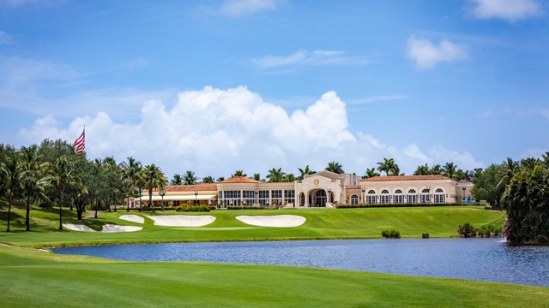
Also in West Palm Beach is the Trump International Golf Club. Donald Trump got this made out of a dispute with the county airport. Though he wanted the jail moved, which he obviously didn’t get.
While playing defense against Palm Beach’s constant attempts to rein him in, Donald Trump went on the attack against the county and its airport. Airlines routinely used a flight path in and out of Palm Beach International Airport in nearby West Palm Beach that brought the planes directly over Mar-a-Lago. This didn’t sit well with Trump, arguing that the noise and fumes were ruining his investment, and that the decent thing for the county to do was to move the airport farther west. Actually Trump had been arguing that for years, to no avail. Acting like a spoiled brat not getting his own way, he called airport director, Bruce Pelly, among other things, a “moron” and “the worst airport director in the country.” It turned out to be a useful gripe for Trump, which he could turn into a new business opportunity. For just south of the airport was a 214 acres of vacant scrub land owned by Palm Beach County, which he wanted. So like any rich spoiled adult, he sued the county for over $75 million over the airport noise. Only to negotiate to drop that lawsuit in exchange for the county giving him a 75-year lease on the nearby property for $438,000 a year. That land became the Trump International Golf Club, a $40 million, 18-hole, Jim Fazio-designed course that imported nearly 2 million cubic yards of dirt to transform the flat scrub into hilly terrain with waterfalls, rock formations, a clubhouse 4 stories above sea level. While planning to open the course with initiation fees starting at $100,000, Trump wanted the county to do one more thing for him: move the jail. Because no matter how much landscaping he brought to the course, there was no way disguising the 12-story Palm Beach County Jail towering over the course’s north side and was visible from some of the holes. So as he had done with the airport, Trump asked the county to move the jail. Naturally, they refused, while the sheriff found the idea amusing.
Yet, Donald Trump’s war with the Palm Beach International Airport hasn’t quelled. When the airport considered expanding by adding another runway, Trump threatened another lawsuit. Though the expansion never came, Trump sued the airport again in 2016 for $100 million from county taxpayers for the sooty residue left by planes flying over Mar-a-Lago. Still, perhaps his actions aren’t about the airport, which he’s using for leverage to get what he wants but can’t have at the moment. Because Trump is always at war and woe to those who stand in his way.
Over the years, Palm Beach has gradually come to accept Donald Trump’s outsized personality along with his private club as more of an asset than a potential source of trouble. Mar-a-Lago has hosted many glittering social events, charity balls, and political fundraisers. As a concert hall, it has housed Palm Beach Opera shows and performances from top-notch entertainers like Celine Dion and Tony Bennett. As town officials moved on, their successors gradually loosened their tight reins on the club, easing the restriction on the numbers of outdoor beach barbecues it would allow, permitting the construction of an outdoor pavilion, and allowing the club to build a 14,000 sq. ft. kitchen on the grounds so waiters don’t have to use golf carts for hauling food inside and outside the mansion. Trump has also figured how to pay less taxes on Mar-a-Lago. By giving up development rights on the land to the National Historic Trust for Historic Preservation, it eliminated the county property appraiser’s ability to tax the place on the “highest and best use” standard that contemplated the estate can be still chopped up into lots and sold off. Yet, while Trump has become a Palm Beach fixture, it would be wrong to say he’s mellowed for he never does.
But that doesn’t mean Donald Trump’s presence hasn’t disrupted Palm Beach life in recent years. In fact, since his election to the presidency, his stays at Mar-a-Lago have raised issues not seen since he was a private citizen. Since they involve security and the impact his visits have on people and businesses in Palm Beach. Nowadays, whenever Trump resides in the Palm Beach region, the area becomes a zone of temporary flight restrictions affecting flights and other air operations within a 30 nautical mile radius. Coast Guard and Secret Service secure the 2 waterway approaches, ocean and lake. While the Secret Service cordons off streets to Mar-a-Lago. At Latana’s Palm Beach County Park Airport, the situation is dire. Whenever Trump is at Mar-a-Lago, Federal Aviation Administration restrictions ban all flights out of that airport, which is one of the busiest of its size in the country. It doesn’t help that the airport receives most of its business on weekends and holidays, particularly during the winter at peak snowbird season, when Trump would most likely be there. For instance, by the third weekend of February 2017, the Palm Beach County Park Airport had been shut down for 3 consecutive weekends, accumulating significant financial losses for multiple businesses. So to put it this way, as president, Trump’s visits to Mar-a-Lago during the winter have basically costs Palm Beach County millions of dollars in lost revenue from tourism. The county is also worried about the police overtime it’s racking up, which could be $60,000 a day.
While Donald Trump may give plenty of things for Palm Beach locals to talk about, there are other aspects we should discuss. First, since Trump became president, his visits have cost taxpayers millions of dollars for federal security detail, which has gone to the Trump Organization’s coffers. But it’s very clear that he’s making money off his presidency. Nonetheless, Mar-a-Lago club members enjoy the fact having Trump president gives them personal access to political power during his visits. In fact, since his inauguration, guests have been flocking to Mar-a-Lago to catch a glimpse of him. But the fact access to a president can be bought for thousands of dollars at his private club should worry every American. And it should make it alarmingly clear that Trump is a man of and for the 1%. Already, ProPublica claimed that a trio of ultrawealthy Mar-a-Lago members are effectively running the Department of Veterans Affairs in influencing policy and making personnel decisions. In fact, a veterans’ group has sued the VA over it.
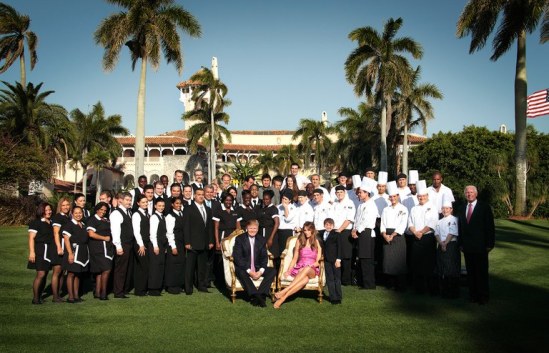
Here is Donald Trump with Melania and Barron posed with Mar-a-Lago’s employees. Most of them have HB-1 visas despite that Palm Beach locals were perfectly willing to do those jobs.
Second, despite Donald Trump’s self-promotion as a “champion” for US workers (which he isn’t), Mar-a-Lago has consistently hired a predominantly foreign workforce. He claims the local workforce is unwilling to do the work and that his foreign employees are best suited for the jobs. Except that’s not true. In 2016, The New York Times reported that over 200 locals had applied to work as cooks, waiters, and housekeepers since 2010. Only 17 of them were ever hired. Also, as with many Trump enterprises, there are plenty of wage theft complaints from contractors and employees. Given that foreign workers are easier to exploit since they can be threatened with deportation if they don’t toe the line, perhaps that’s why Trump prefers to employ them over locals.
Furthermore, The Palm Beach Post reported that Trump scored visas to hire 70 foreign workers at Mar-a-Lago for the 2017-18 tourist season. Third, in January 2017, Mar-a-Lago’s kitchens were hit with 13 health and safety violations, including 3 that were called “high priority.” Inspectors claimed that meat wasn’t properly refrigerated and could be unsafe for consumption, undercooked or raw fish that hadn’t undergone proper parasite destruction, and not maintaining coolers in proper working order. Another inspection in November resulted in 15 more health citations, according to the Miami Herald. In January 2018, Mar-a-Lago was cited for maintenance violations which could’ve posed a threat to public health, safety, and welfare like broken staircases, improper food storage, and inadequate smoke detectors.
Then there’s Mar-a-Lago’s security and cybersecurity woes. In recent years, Gizmodo reported that hackers found 3 of its networks as so weak that they could’ve breached the systems within 5 minutes. The 3 hackers behind the article claim they made the discovery using a 2ft wireless antenna from on board a 17ft motor boat parked offshore. Though Donald Trump’s company has expressed confidence in its cybersecurity as spokeswoman Amanda Miller told Gizmodo, “Our teams work diligently to deploy best in class firewall and anti-vulnerability platforms with constant 24/7 monitoring.”
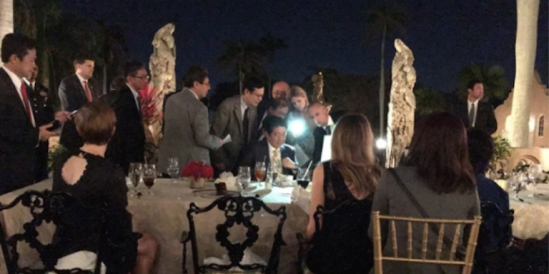
In April 2017, we have Donald Trump and Japanese Prime Minister Shinzo Abe receiving news of North Korea launching a nuclear missile in Japan’s direction. Note the classified information being shown in the cell phone screen.
Speaking of security breaches, Donald Trump’s trips to Mar-a-Lago afford an unprecedented opportunity for eavesdropping and building dossiers on his routines and habits along with those in his inner circle around him. Add that with each repeated visit, the security risk escalates. As former Obama official David Kris told TIME, “The president is the biggest, richest intelligence target in the world, and there is almost no limit to the energy and money an adversary will spend to get at him.” According to former Secret Service agents, the security setup at Mar-a-Lago and Trump’s other private clubs presents challenges to the agency wasn’t built to deal with. Since the Secret Service’s main job is to protect the president from physical threats and monitoring for wiretaps and other listening devices. Not from the kinds of counterespionage challenges presented by the president’s choice to eat, sleep, and work at a club accessible to anyone who can get a member to invite them in. White House visitors must go through a rigorous background screening before they’re let in the door. Agents scan every visitor’s full name, birth date, Social Security number, city of residence, and country of birth. Gaining entry at Mar-a-Lago doesn’t require that degree of disclosure. Sure guests entering the club have to pass multiple security checkpoints staffed by Secret Service agents looking for weapons or other immediate threats. But there’s only one requirement to produce a photo ID, while the club doesn’t ask guests to provide their names or other information as they enter through the main wrought-iron gated door. At public events, attendees are only asked to provide their name. Since has Trump has become president, the lax security measures can make Mar-a-Lago a free-for-all for spies.
Hell, spies don’t even need to go to Mar-a-Lago to do their work. In early 2017, lists of the club’s nearly 500 exclusive dues-paying members were leaked to the news media, giving foreign intelligence names of potential targets for surveillance, bribes, or blackmail that could help them get closer to Donald Trump. In addition, a page on Mar-a-Lago’s website (which is accessible to the public with just a little search engine sleuthing), reveals the names, work email addresses, and phone numbers for more than a dozen critical club employees, including the managing director, the housekeeping director, the official in charge of food and beverage services, and the chief of security. All would be obvious targets for operatives trying to get information on Trump or others in his entourage.
Mar-a-Lago may be a winter White House for Donald Trump. But since his inauguration, it has become another political arena where one with wads of cash can have access to political power. Indeed, plenty of these guests are rich people from old money. Though others can be politicians, foreign dignitaries, and corporate heads wanting something in exchange for their service. This can be donations, but it can also be policy that could affect our lives and not for the better. Yet, it’s another arena that can be prone to spy infiltration from eavesdroppers listening into conversations which can compromise our national security. Since it’s already happened in 2017. Nonetheless, we must be wary when Trump goes there since his visits are marketing events and he’s used his trips to make money off the presidency, which is a very clear conflict of interest.
